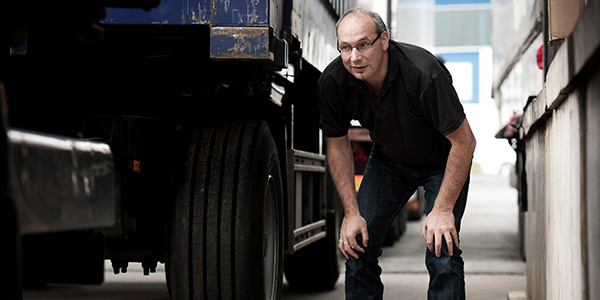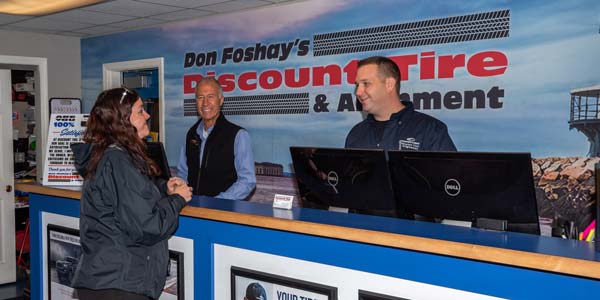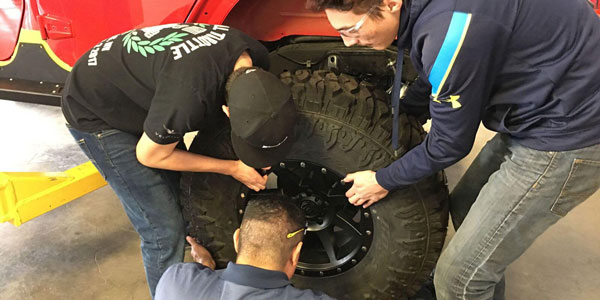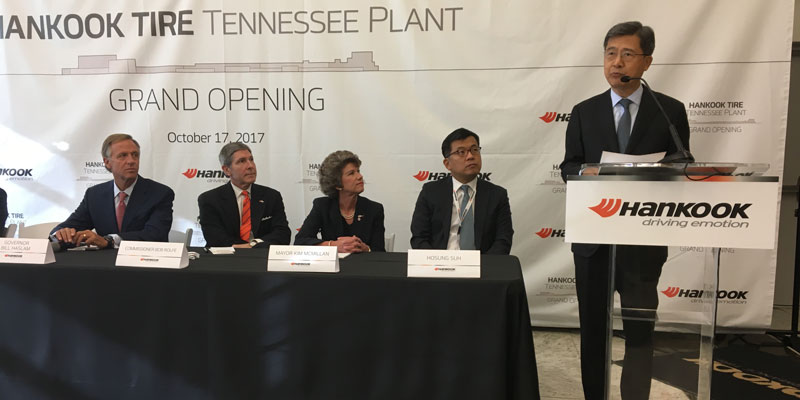For thousands of years, the wheel has been a critical component of daily life. From its first use as a potter’s wheel in 3500 B.C., to use on chariots for mass transportation 300 years later, the wheel has continued to evolve. With the introduction of the tire years later came many benefits, including improved safety, comfort and cost.
Today, the commercial tire industry continues to evolve and explore new ways to improve safety and performance, as well as deliver a reduction in total cost of ownership. As the trucking industry navigates new regulations, driver retention challenges, and other external factors, tire manufacturers are adjusting and improving to meet the emerging needs of their customer base.
Unprecedented innovation often occurs at the intersection of industry changes and customer needs. In the commercial trucking industry, for example, an effort to manage diesel engine emissions led to new technologies and complexities such as high-pressure electronic fuel systems, electronic control modules, and Selective Catalytic Reduction (SCR) systems, among many other solutions. These advancements added cost and created disruption, setting in motion a chain reaction of truck power development within the trucking industry that is leading to cleaner and less expensive electric and hybrid power in the foreseeable future. This evolution in truck power will not only impact diesel engine manufacturers, but also industry suppliers and customers. Similarly, the driver shortage and need to reduce cost and improve emissions are driving significant industry changes, such as truck platooning, autonomous vehicles and the electrification of truck power. All of these factors and others are driving demand for enhanced tire performance and integrated, dynamic solutions.
An Ongoing Shift to a Solutions Mindset
We are at a pivotal point in the commercial tire industry where engineering and selling a great tire are no longer enough to satisfy the needs of fleet customers. Advancements in the trucking industry are leading customers to expect more from dealers and tire manufacturers. Technology and data solutions are having a profound impact on the way customers do business, allowing them to refine, optimize and better manage their operations, which in turn will drive profitability. While commercial tire manufacturers today are accustomed to specially designing tires to meet the needs of a variety of customers and applications, we also must deliver solutions that wrap around our products and respond real-time to factors such as tire temperature, inflation pressure, vehicle load, altitude and road conditions.
Continued changes in the commercial trucking industry will require complex adjustments in tire chemistry and design to optimize both wear and rolling resistance. Rapid advancements in tire technology and more sophisticated data solutions ultimately will result in the creation of an electronically connected, dynamic and self-managing tire solution for the future.
To reach that day, companies are taking initiative; however, that initiative currently is focused on developing individualized solutions. To truly revolutionize the industry, tire manufacturers must focus on delivering a holistic tire solution that unites sensor technology, automatic inflation kits, telematics, data reporting, and more into one highly connected tire ecosystem.
In the future, it will become increasingly important for dealers and fleet customers to partner with a tire manufacturer capable of assimilating these technologies into one cost-effective solution that is fully integrated with the vehicle’s original equipment manufacturer.
The Important Role of Retreads
As we advance tire design, we also should look at the retread solutions available today and the critical role they play in the commercial transportation industry. Tire costs, along with fuel, are one of a fleet’s highest expenditures. The more the tire industry educates fleet customers about the value of retreads, the more they will understand the opportunities that exist in incorporating retreads into their operations.
After decades of research and development, today’s retread is an entirely new breed – helping savvy business owners get new-tire performance at a fraction of the price. In spite of unsubstantiated myths, the reality is that today’s retreads are a responsible choice that offers cost savings while delivering trusted, reliable performance.
Additionally, studies from the National Highway Traffic Safety Administration (NHTSA), the American Trucking Association (ATA), and other organizations have concluded that retreads deliver the same safety, quality and performance as new tires. Major organizations, municipalities and airlines around the world put their trust in retreads as part of their overall fleet management.
Perhaps most importantly, retreads are a sustainable choice. As transportation and logistics leaders seek to optimize their daily operations, they also are seeking to drive sustainable solutions. Retreads reduce the use of raw materials by 70% while also minimizing the amount of waste that ends up in landfills. In fact, the U.S. Environmental Protection Agency (EPA) estimates a 70% reduction in the amount of oil used for retreads as compared to a new tire.
Sustainability Initiatives that Advance Tire Technology
Today’s tire advancements share common goals, with broader sustainability initiatives sweeping the nation. One notable example is the tire industry’s role in advancing efforts to reduce greenhouse gases.
Major players in the commercial trucking industry are pushing to improve fuel economy and utilize technologies that will have a positive impact on the environment, and tires are an important part of this. As customers prioritize fuel efficiency, manufacturers that offer a more sophisticated and fully integrated tire ecosystem capable of driving significant improvements in fuel efficiency and increased tire life will fare best.
Ultimately, more efficient and longer lasting tires will drive down demand for new replacement offerings, reducing greenhouse gases emitted during tire production.
The Opportunity Ahead
It’s an exciting and dynamic time to be in the commercial tire industry. The trucking industry is evolving, which is driving unprecedented tire innovation and wrap-around solutions that will benefit both dealers and fleet customers. Above all, connectivity and instant access to real-time tire data will be key factors driving performance for the end user long-term, allowing for quick diagnosis and better tire asset management. As we seek to realize the benefits of an electronically connected, dynamic and self-managing tire solution for the future, it is imperative that we never stop evolving and anticipating customer needs.
Joseph Saoud is president of the truck, bus and retread tire business of Bridgestone Americas Tire Operations (BATO). In this role, he leads the development and delivery of innovative products, technologies and services that drive value for fleet customers, original equipment manufacturers and commercial dealers.














